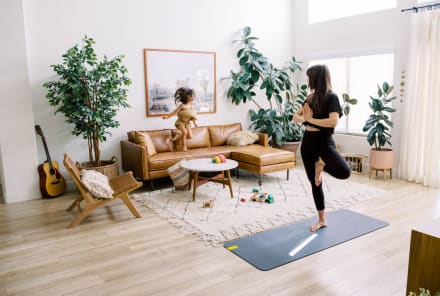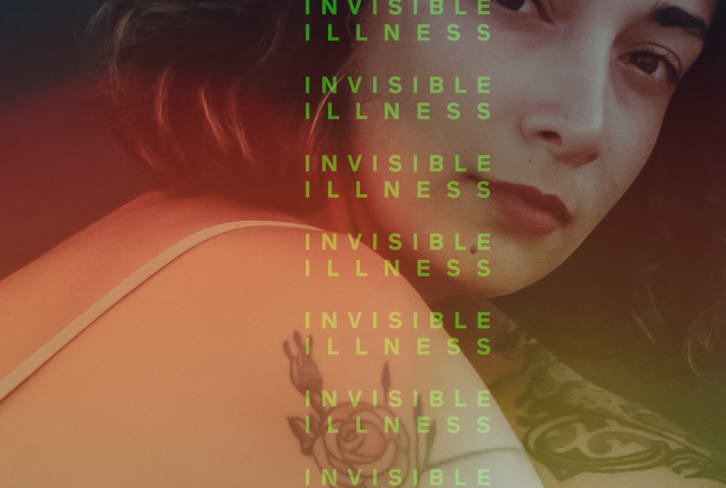Advertisement
12 Couple Sleeping Positions & What They Mean


A couple's sleeping position can say a lot about what kind of relationship they have and how they really feel about each other. Your subconscious controls the way you sleep, so sleep-fueled body language can serve as an interesting insight into what might be going on, even if you're not aware of certain things while the sun is up.
Here, we've culled information from scientists, psychologists, therapists, and relationship counselors to interpret what 12 different couple sleeping positions might mean.
1. The Spoon
Spooning is the most well-known of couple sleeping positions, but according to a 2015 study conducted by relationship psychologist Corinne Sweet, only 18% of couples actually prefer it. Sweet says spooning is a "traditional position" that indicates protectiveness and comfort in the relationship. In addition to the "I trust you" vibe—one partner literally has the other's back—it's also a fairly sexual position, favored by couples who are comfortable with intimacy.

2. The Loose Spoon
A variation on the traditional Spoon, the Loose Spoon just means there's a bit of space between the couple. Don't mistake those few inches for lack of intimacy, though. On the contrary, it usually means you've been together long enough to trust one another and don't feel the need to constantly be touching. This position is the natural evolution of a couple who started their relationship in a tight Spoon but now recognizes quality sleep (and some space) is important.
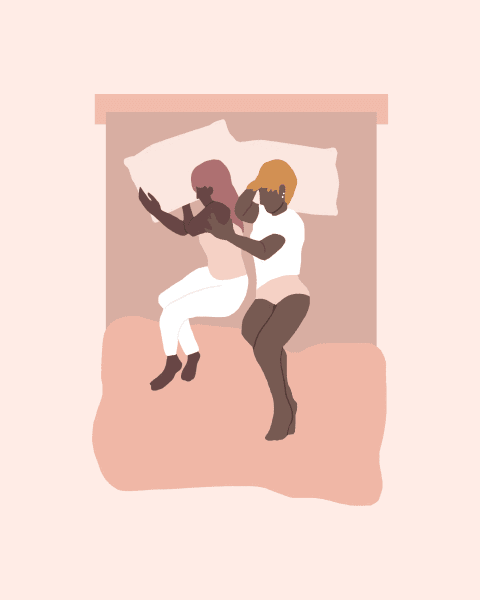
3. The Chasing Spoon
Though this one may look like a standard Spoon, the Chasing Spoon is usually a little lopsided: One person has moved away from the center of the bed, and the other "chases" to physically reconnect. According to Sleep Positions: The Night Language of the Body, the Chasing Spoon could simply mean that one partner wants more space in the bed. The other, less literal interpretation is that the partner doing the drifting wants to be pursued.
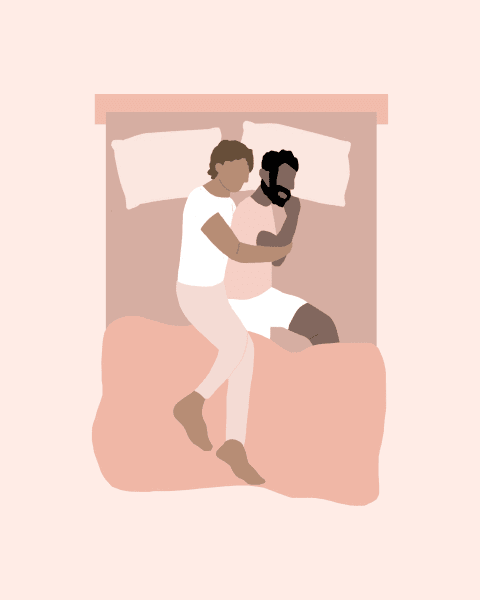
4. The Unraveling Knot
Like the Loose Spoon, this position is typical of couples who've been together for some time. Though they start out touching (the Knot), they eventually "unravel" into independence. Sweet says it's a "compromise between intimacy and independence, allowing for the best of both worlds," though only about 8% of couples favor this position.
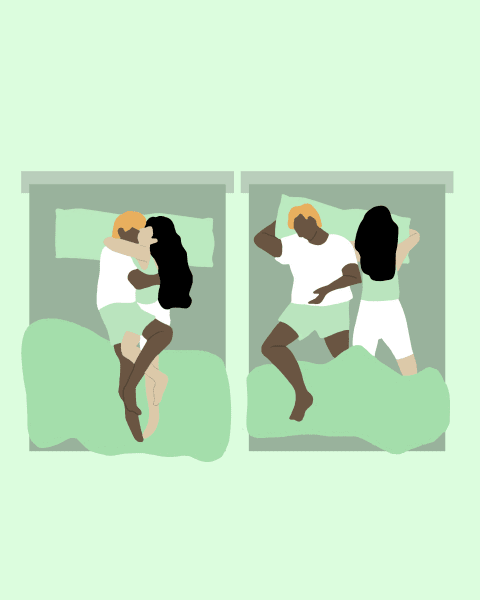
5. The Back Kissers
About 23% of couples fall asleep in this position, according to Sweet's study. The Back Kissers fall asleep back-to-back, with contact along the spine. You're connected but independent enough to appreciate your own space in bed. Because your butts still touch, you want to stay sexually connected despite your confidence to face in opposite directions. Chances are you're a new couple who doesn't yet have a reason for distrust or have been together for a while and are relaxed and comfortable with one another.
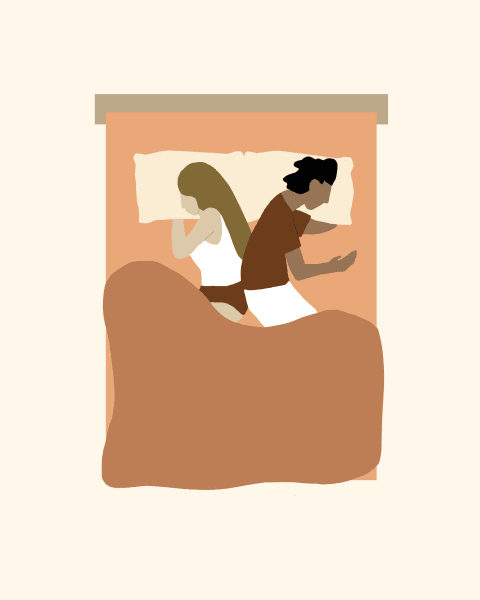
6. The Liberty Lovers
Another position more common with established couples, the Liberty Lovers sleep back-to-back, but with space between them. Sweet's study found 27% of couples fall sleep this way. Despite facing opposite directions and not touching, this position actually indicates you're connected and secure. You can be close without touching, sharing a bed but independent. You're the kind of couple that's OK doing things alone but can't wait to be back together to share stories and recount your day.
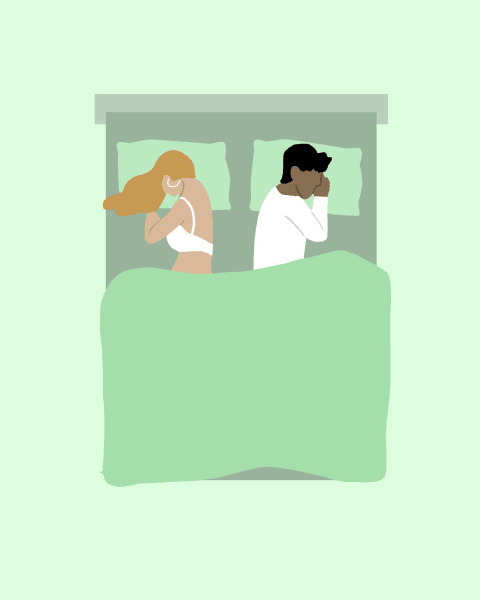
7. The Shingles
Not the sexiest name on the list but one that indicates a high level of comradeship. Typically, both partners are on their backs, with one resting his or her head on the other's shoulder. Because of the strong egos here (people who sleep on their backs are thought to possess big personalities), when one partner complies and lets the other play protector, it means you really understand each other. It indicates confidence in the relationship.
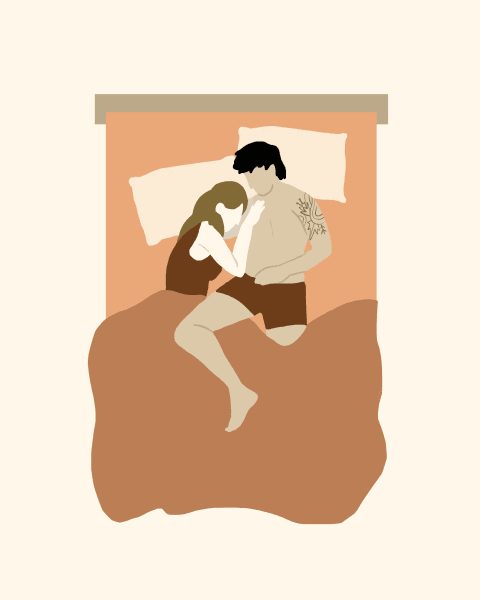
8. The Nuzzle
The ultimate sign of trust and protection, the Nuzzle is common in new and rekindled relationships. When one partner sleeps with his or her head on the other's chest, it creates a nurturing, open position and a sense of companionship as you snuggle.
Sleeping on your back indicates confidence and self-assurance and sends the message that you're using your power to protect your partner. If you're the one resting on your partner, you're independently dependent—capable of doing your own thing but appreciative of and in love with your significant other.
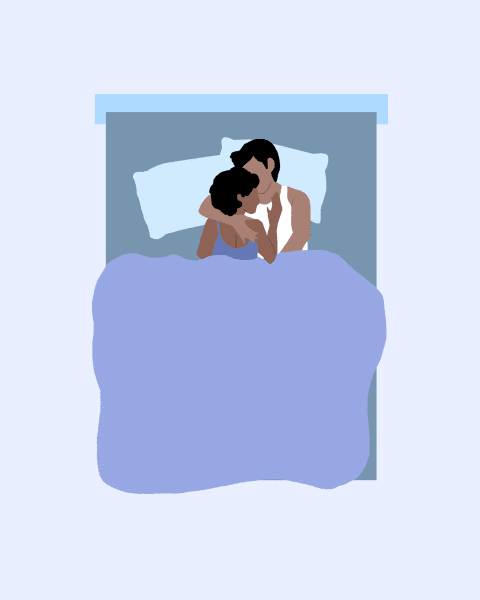
9. The Tangle
Ah, young love! If you favor the Tangle, chances are you're in a fairly new relationship and can't bear to be separated for even a second. It's an incredibly intimate position that means you can't get enough of each other. If, however, you're still sleeping like this after the six-month mark, it could mean you're too dependent on each other. Just 2% of couples prefer this position.
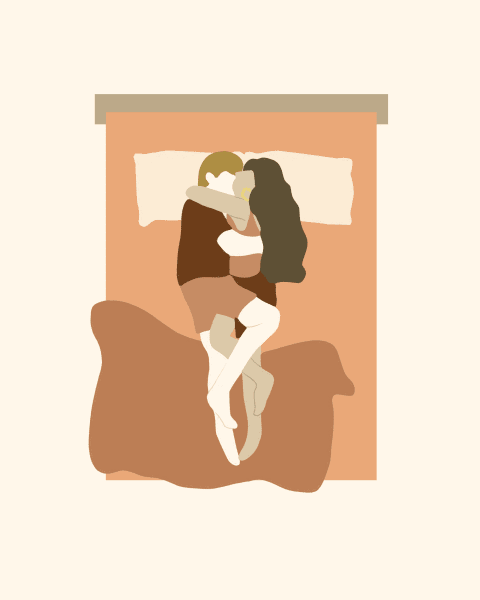
10. The Leg Hug
The Leg Hug is a little unclear, as it can indicate a number of things. If only one person is doing the "hugging," it could signal that they are craving a connection with the other (kind of like the Chasing Spoon). And since your legs are first to react in a fight-or-flight situation, they're often the most honest part of the body.
If you're both intertwined, you're equally passionate, and the emotional and sexual connection is strong. Just like your legs, your lives are blended and balanced.
A third interpretation of the Leg Hug is that since the contact is so casual, it could imply you're ambivalent about expressing affection or just had a fight but are trying to maintain a connection, despite heated emotions.
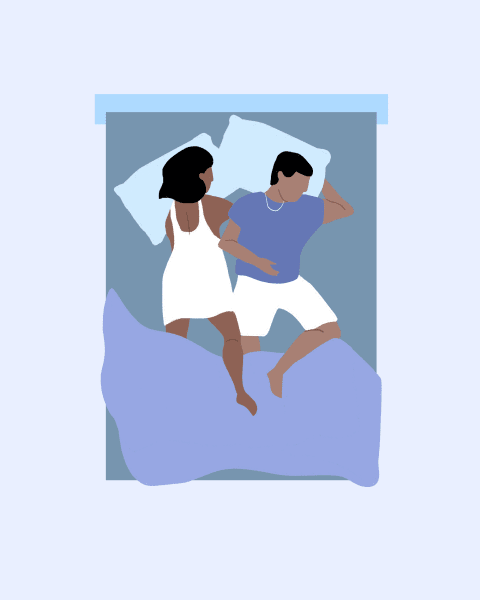
11. The Stomach Snoozers
A couple that sleeps on their stomachs might want to think about having a conversation. Because sleeping facedown protects the front of the body, the Stomach Snoozer position could be indicating signs of anxiety, emotional fear, vulnerability, or lack of control.
It's also not an intimate position—none of the body parts associated with sex are in play here—so it could also mean there's a lack of sexual trust in the relationship.
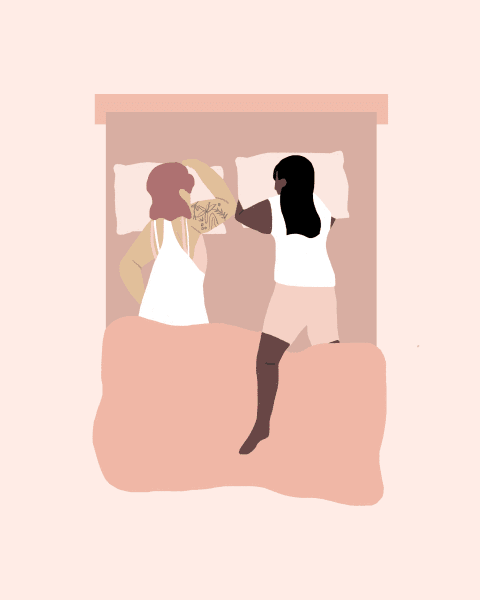
12. The Space Hog
If your partner spreads out with little regard for where you are in the bed, it could be a negative sign for the relationship. The Space Hog—who, as the name indicates, spreads themselves out in bed, taking up all the space—is behaving selfishly and has little regard for your needs.
If one partner dominates the bed, it's likely they dominate the relationship, relegating their partner to a secondary, submissive role. If one partner's head is higher (closer to the headboard) than the other's, that could signal they're more confident than their lower-sleeping partner. Conversely, if your heads are parallel, you are like-minded equals.

Remember these are just clues and interpretations, not diagnoses. If you're worried about your relationship or the way you're sharing the bed, just talk to your partner about it. If you're happy with your relationship and fine with whatever position you doze off in, that's all that matters.
Watch Next
Enjoy some of our favorite clips from classes
Enjoy some of our favorite clips from classes
What Is Meditation?
Mindfulness/Spirituality | Light Watkins
Box Breathing
Mindfulness/Spirituality | Gwen Dittmar
What Breathwork Can Address
Mindfulness/Spirituality | Gwen Dittmar
The 8 Limbs of Yoga - What is Asana?
Yoga | Caley Alyssa
Two Standing Postures to Open Up Tight Hips
Yoga | Caley Alyssa
How Plants Can Optimize Athletic Performance
Nutrition | Rich Roll
What to Eat Before a Workout
Nutrition | Rich Roll
How Ayurveda Helps Us Navigate Modern Life
Nutrition | Sahara Rose
Messages About Love & Relationships
Love & Relationships | Esther Perel
Love Languages
Love & Relationships | Esther Perel



